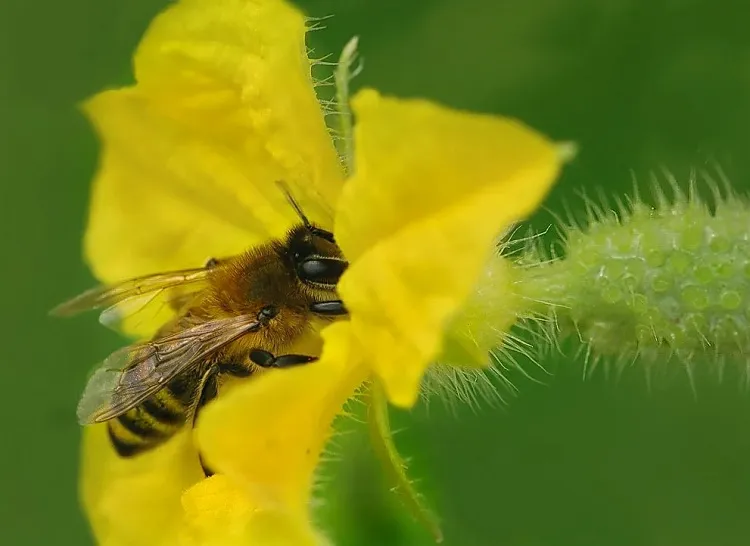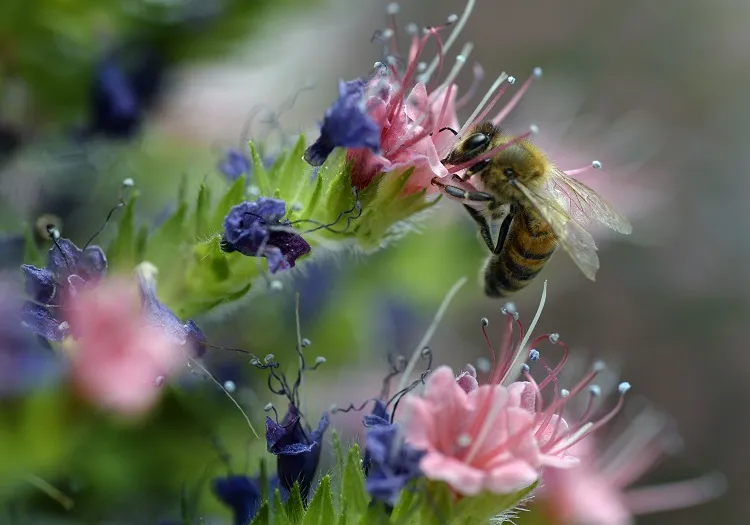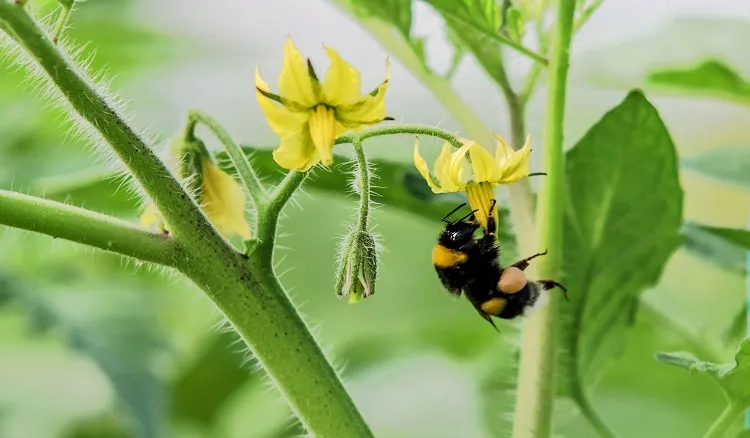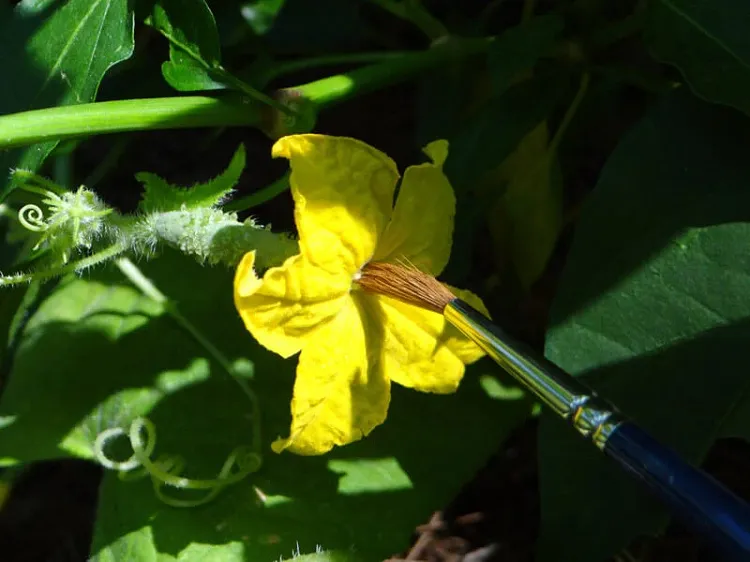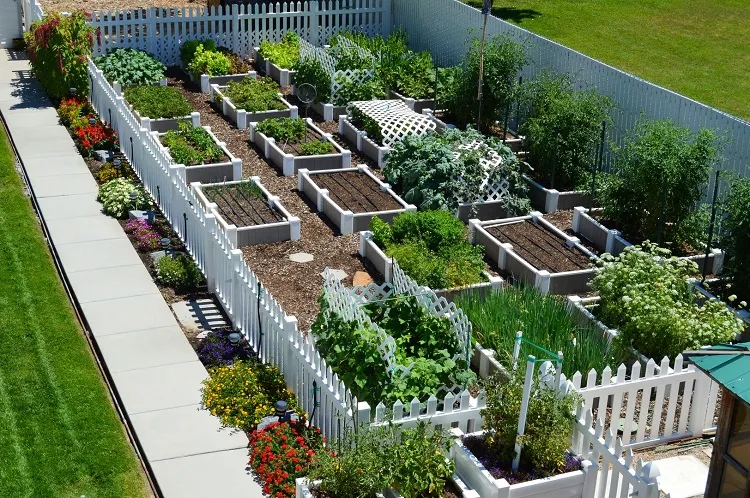A good pollination means high plant productivity, and most vegetables rely heavily on bees to do this work. But how to invite these valuable creatures to increase pollination in vegetable garden? Is there a way to make artificially this process when there is a shortage of these insects?
Inviting Vegetable Garden Pollinators
Attracting the suitable insects is the best method to increase pollination in the vegetable garden. By a bee-friendly garden, you’ll create an environment where these beneficial creatures thrive, leading to improved productivity in your green area. There are some tips on how to do it more efficiently:
- Ensure all season long flowering: Every species of pollinator likes certain kinds of flowers. So, to have a variety of pollinating insects, plant a mix of annuals, perennials, and herbs, which bloom throughout the growing season. Some of the best flowers for this purpose are lavender, marigold, zinnia, borage, and sunflowers.
- Give them drinking water: Pollinating insects need to drink to stay in your garden. Therefore, set up a shallow dish or a little pool with clean water, and place around some stones, sticks or other objects for them to rest on while drinking.
- Provide with shelter and nesting spots: Pollinators will appreciate your efforts, if you ensure they have their favorite habitats to nest and shelter. To achieve this, incorporate shrubs, grasses, and small trees that differ in height and structure where they can find hiding places. It’s a good practice also to place bee houses or leave patches of bare soil for ground-nesting bees.
- Consider organic pesticides: Chemical ones are dangerous to pollinators, so it would be best to choose organic pest control methods. Apply these less harmful insecticides sparingly and on selected areas. It’s wise to think about integrated pest management techniques to maintain a healthy ecological balance in your garden.
How to Increase Pollination of Tomatoes
Tomatoes are the most essential possessions in many green areas, so it’s vital to increase pollination in the vegetable garden where these invaluable plants grow. You maybe know that tomatoes have both male and female parts within each flower. So, gently shaking the plants will make the pollen to release, which helps the tomato to self-pollinate. Do this when the flowers are fully open, during the morning hours, when this process is most likely to be successful. It’s wise to ensure good airflow around the plants, as wind is important for pollination. That’s why, plant the tomatoes with enough spacing between each other. Then prune the excessive foliage, and supply the tomatoes with supporting stakes or cages to improve air circulation, which also helps the pollinators to fly around freely. The better is to invite the bumblebees and solitary bees. Encourage them to come by planting native flowers, providing nesting sites, and avoiding the use of insecticides. But when there are not enough of these insects nearby, you should do the pollination artificially, by hand. With the help of a small brush or a cotton swab, transfer pollen from the stamen to the pistil of the flowers. Gently touch each flower’s center, ensuring effective pollination.
Increase Pollination in Vegetable Garden for Zucchini
Zucchini have separate male and female flowers, which makes them highly dependent on pollinators for growing fruits. In this case, the best to do is to attract bees in your garden. Some of the good choices are to plant lavender, cosmos, and coneflowers to invite bees to your garden. Then, be careful to avoid pesticides and use organic pest control ways. It’s possible to apply targeted insecticides also, to protect your zucchini plants. If, despite your efforts, the pollinating insects are not enough, you should hand-pollinate, transferring pollen manually. Firstly, identify a male flower with a long stem, cut it off and remove the petals. Gently brush the pollen-loaded stamen onto the centers of the female flowers, which have small fruit-like structures at their bases.
How to Improve the Pollination of Cucumbers
Cucumbers rely on bees for effective pollination, and there is a need to plant insects attracting flowers. Rely on a variety of flowers that bloom throughout the growing season, like sunflowers, calendula, and borage. It would be nice to have a bee house and install it in your garden. It will attract for nesting and shelter solitary bees, which are the common cucumber pollinators. If you can’t give up from pesticides in cucumber cultivation, use them selectively. Apply in the late evening when bees are not flying, or replace them with insecticidal soaps and other eco-friendly solution. Aid the pollen to access the flowers of cucumbers by good air circulation. This can be achieved by good spacing between plants and using trellises or stakes to increase airflow.
All these measures will also contribute to the conservation of essential pollinator species.

